
NIKKI Peucang Resort
The Best Beachfront Resort Within Reach of Jakarta
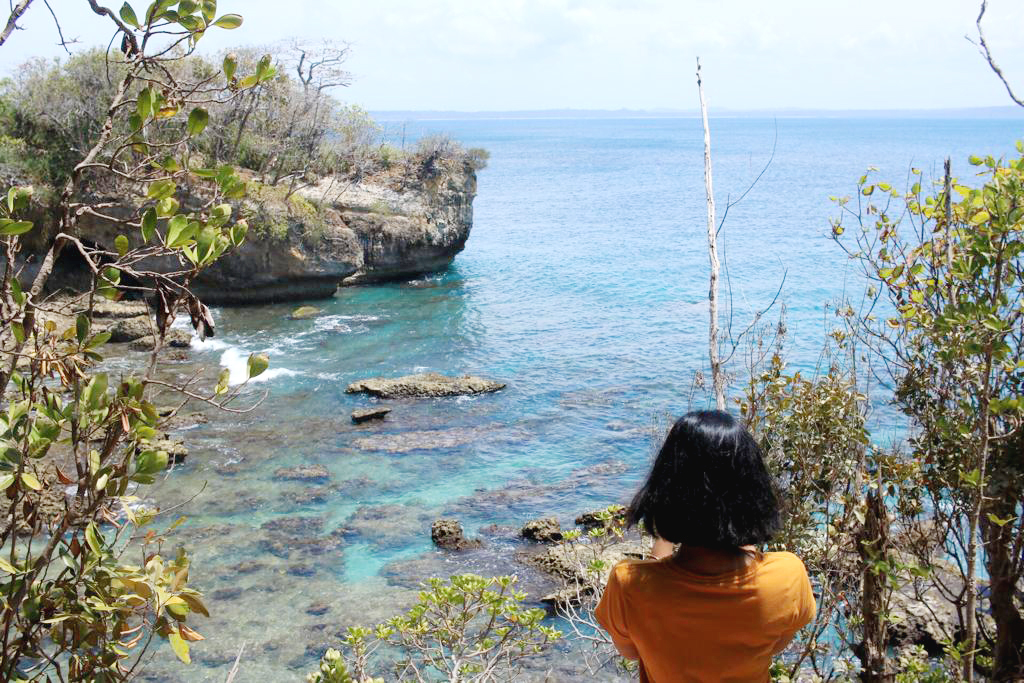
Get acquainted with Karang Copong,
a Geoheritage in Peucang Island,
Ujung Kulon Geopark
Ujung Kulon Geopark was finally officially designated as a National Geopark on November 10, 2023, with the issuance of Minister of Energy and Mineral Resources Decree Number 393.K/GL.01/MEM.G/2023. Previously, it may need to be mentioned that the area included in the Ujung Kulon Geopark is different from the Ujung Kulon National Park (TNUK) area. TNUK is just one of the Ujung Kulon Geopark areas which covers an area of 1,245 square km.
Ujung Kulon Geopark occupies eight sub-districts in Pandeglang Regency, namely Carita, Labuan, Pagelaran, Sukaresmi, Panimbang, Cigeulis, Cimanggu and Sumur sub-districts. Apart from that, as has been mentioned, this geopark also occupies the TNUK area along with small islands that are included in the area or located in the vicinity, namely Liwungan, Oar, Handeleum, Peucang, and Panaitan Islands. A total of 14 Geoheritage have been designated in the Ujung Kulon Geopark area. The good news is that one of the Geoheritage is on Peucang Island.
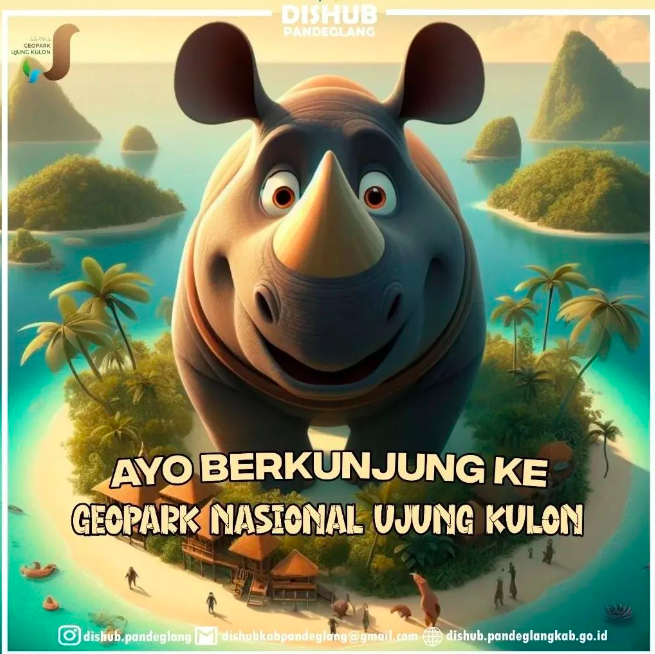
Geological Heritage (geoheritage) is Geological Diversity (geodiversity) such as rocks, minerals, or fossils that are beautiful, rare, and unique. Geodiversity has special value as a Geological Heritage because it is a record of events that have occurred or are currently occurring on Earth. Because of its special features, Geological Heritage has high scientific value and can be used for research and education.
The Geological Heritage on Peucang Island is one of the 4 Geological Heritage located within the TNUK area; namely (1) Karang Copong on Peucang Island, (2) Citambuyun Sandstone on Panaitan Island, and (3) Tanjung Layar and (4) Sanghyang Sirah Complex on the Ujung Kulon Peninsula. This article will invite you to get acquainted with the Geological Heritage of Peucang Island, namely a large and beautiful coral rock which is usually called Karang Copong.
Leisurely Walk to Karang Copong

Karang Copong is not a new tourist destination on Peucang Island. For visitors who are interested in trekking activities, forest exploration, bird watching, and wild animal observation, NIKKI Peucang definitely offers activities to visit Karang Copong. With a leisurely walk, Karang Copong can be reached in around 1 hour 30 minutes from NIKKI Peucang Resort.
NIKKI Peucang Resort is located to the southeast of Peucang Island and Karang Copong is located to the northwest. So when taking a leisurely walk from the NIKKI Peucang Resort location to Karang Copong, visitors will get the experience of walking from one side of the island to the opposite side of the island, or in other words cutting through the jungle of Peucang Island.
Along the path, visitors will meet and become acquainted with various trees that grow in the very fertile tropical rainforest on Peucang Island. The trees that can be found along this path are models or examples of the dominant flora that grows on the island. Among them are the bungur tree (Lagerstroemia speciosa), cerlang (Pterspermum diversifolium), guava (Eugenia sp.), ki hideung (Hydnocarpus heterophylla), bayur (Pterospermum javanicum), kiara (Ficus sp.), kigula (Chisocheton sp.) , lampeni (Ardisia humilis), kicalung (Diospyros sp.), to merbau (Intsia bijuga).
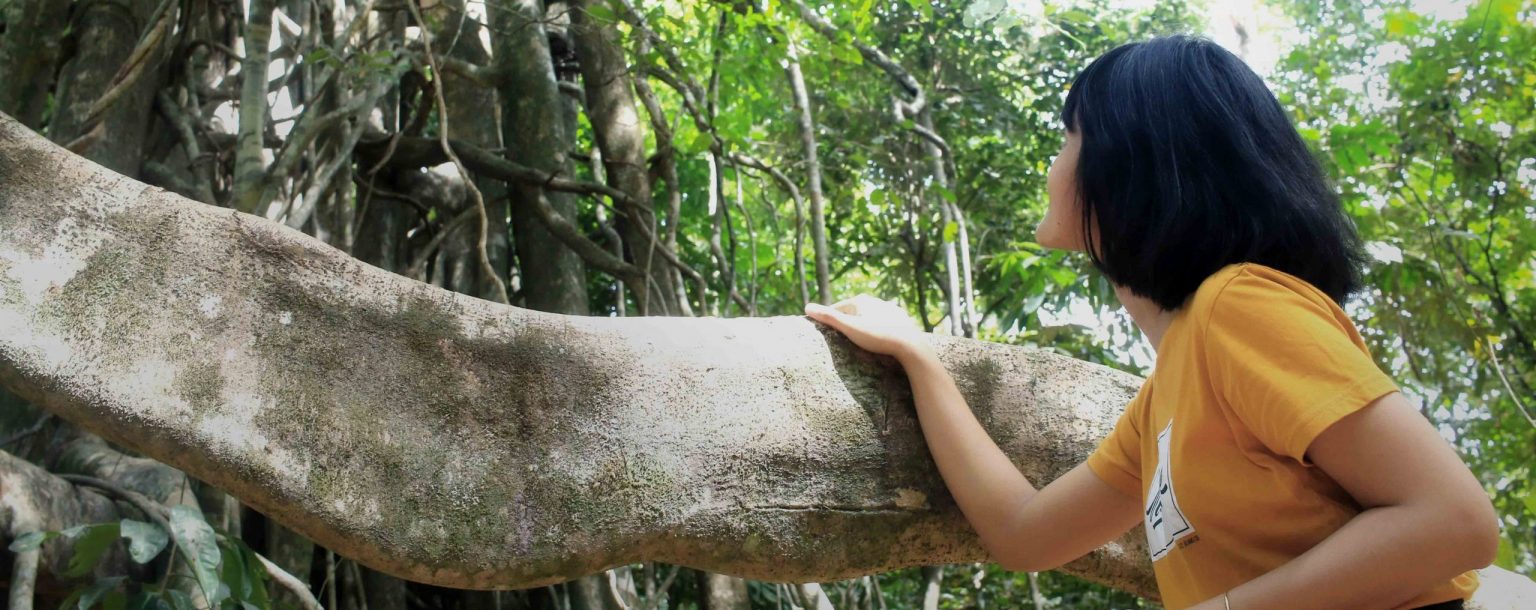
Visitors are usually stunned by the size and height of the trees that grow on Peucang Island. On average, the trees that grow on this island reach a height of up to 40 meters. The trees on Peucang Island, apart from being tall, also have very wide trunks. One of the trees, called the Kiara Tree, even has a diameter of 20 meters and has become an iconic tree on this island.
The dense and thriving trees on Peucang Island are a comfortable home for animals. Peucang Island is a special island because visitors can easily see various exotic wild animals. In fact, animals on Peucang Island are much easier to find than in the entire TNUK area.
One that is easy to find is the hornbill. Visitors often see this rare bird with a distinctive sound of flapping wings flying beautifully across the sky above the sea and then disappearing into the forest. When walking through the forests of Peucang Island, visitors may see hornbills perched on the branches of large trees.
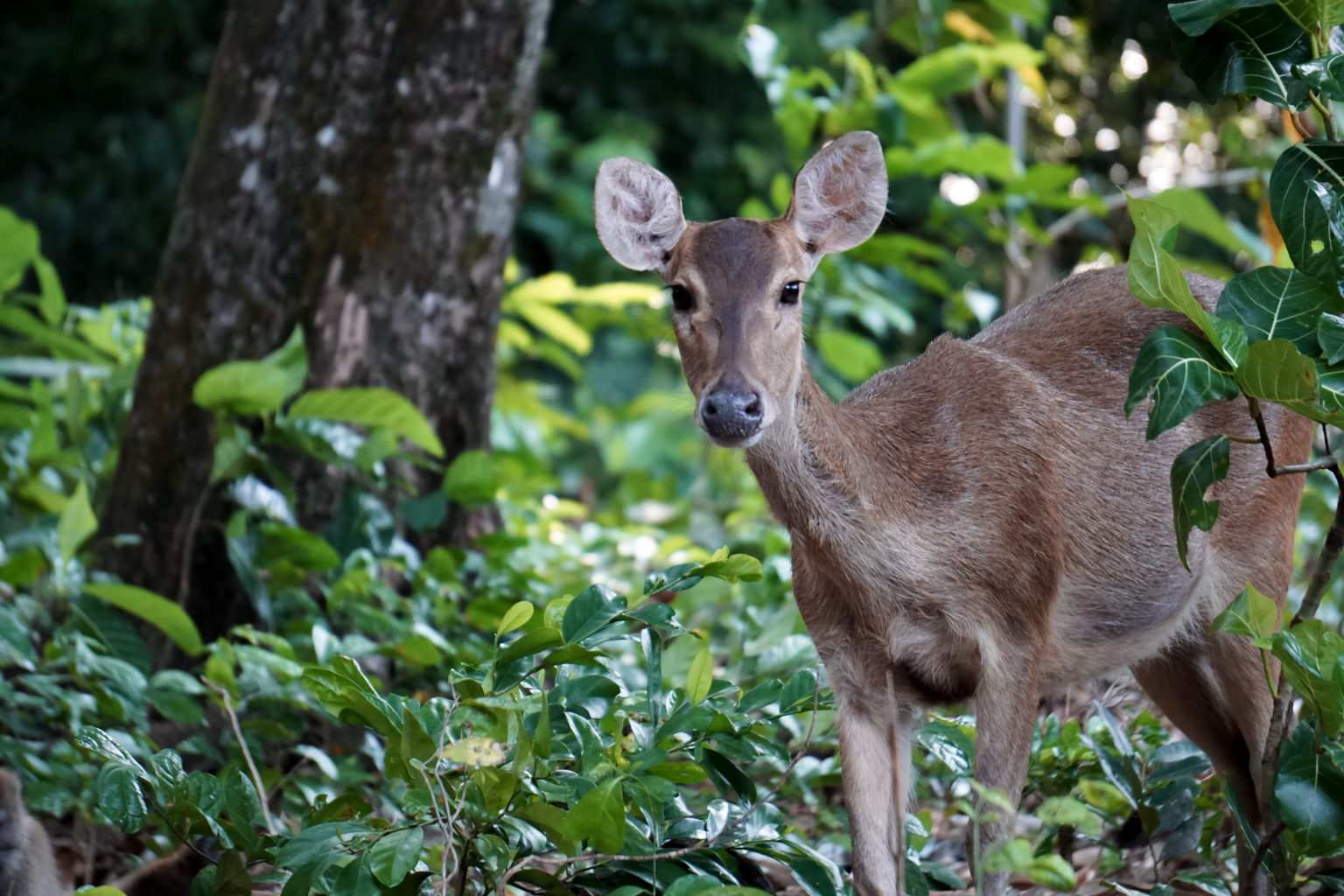
Apart from hornbills, when walking towards Karang Copong, visitors may encounter other birds which are also rare, namely peacocks. This bird is very territorial and doesn’t like being seen by humans, so it chooses to hide in the forests of Peucang Island. They are a bit difficult to find, especially if you hear the rustling footsteps of visitors stepping on dry leaves. Even though they don’t have the opportunity to meet them, when walking across the path to Karang Copong, visitors can sometimes hear their large, deep and resounding voice, warning other peacocks to stay away from humans.
Wild boars, stags, monkeys, are other animals that live healthily on Peucang Island and visitors can easily find them without even having to enter the forest. However, there are some who choose to live in the forest. Especially young male deer that have just grown antlers. Male deer, especially young ones, tend to hide in the forest because they are afraid of meeting another male deer with strong antlers and being challenged to a duel. If a young male deer loses in a duel and his antlers are broken, then he loses his charm to attract the attention of female deer when mating season arrives.
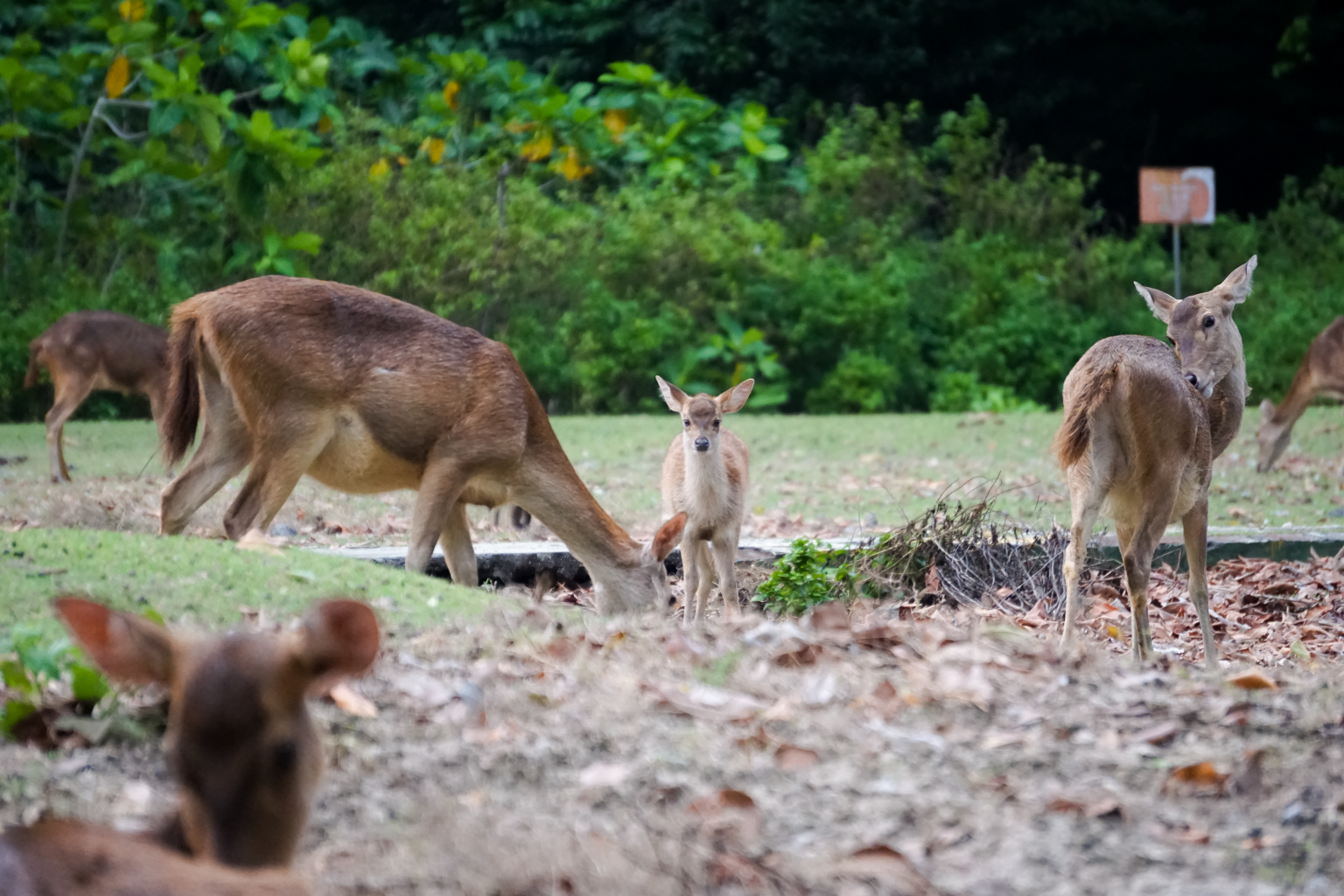
Karang Copong as Geoheritage
Half of Peucang Island stands on coral. The depth of the land on Peucang Island is limited by the coral beneath it. Plant roots cannot penetrate too deep. This condition makes the trees on Peucang Island vulnerable to falling during the strong wind season. Karang Copong is like a large monument which confirms the condition that Peucang Island is a coral island.
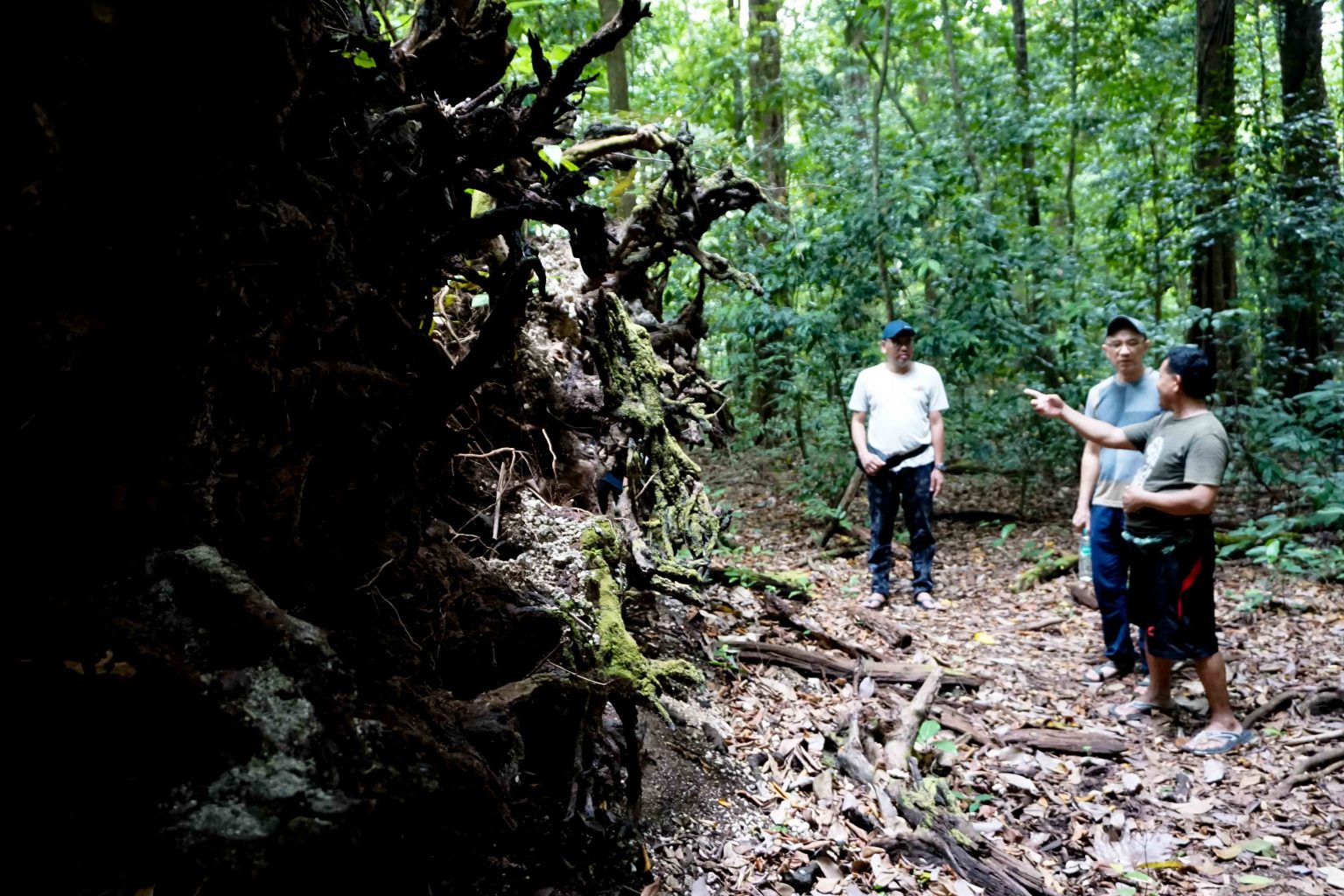
Previously, we had never paid attention to the geological aspects of Karang Copong. We just thought of it as a big, beautiful rocky hill that somehow got into place. However, by being designated as a Geological Heritage, we have come to realize that Karang Copong is a special part of the earth, which was formed over a very long period, and has its own story and role for the earth.
According to geologists, Karang Copong was formed from limestone. Limestone is a sedimentary rock, or stone formed from the deposition of material eroded by various elements such as water and air. The material that makes up limestone is mostly calcium carbonate which comes from the remains of marine organisms such as shellfish, sea snails, animal skeletons, algae, and dead coral.
Limestone is divided into two types, namely non-clastic limestone and clastic limestone. Non-clastic limestone is a pure stone formed from marine animal colonies, especially reefs and coral, and has not experienced much contamination from other minerals. Meanwhile, clastic limestone is the result of the breakdown of non-clastic limestone due to erosion by water, displacement, and other factors. During the breakdown process, other minerals will be included, contaminating and giving color to the limestone. In general, limestone is layered. The precipitated organic structure and other minerals included will give structure and color to each layer.
Karang Copong itself is formed from clastic limestone which is coated with sand-sized rock grains formed from carbonate material, also known as calcarenite, and reef limestone. Reef limestone is marine reef deposits that have not undergone a process of displacement.
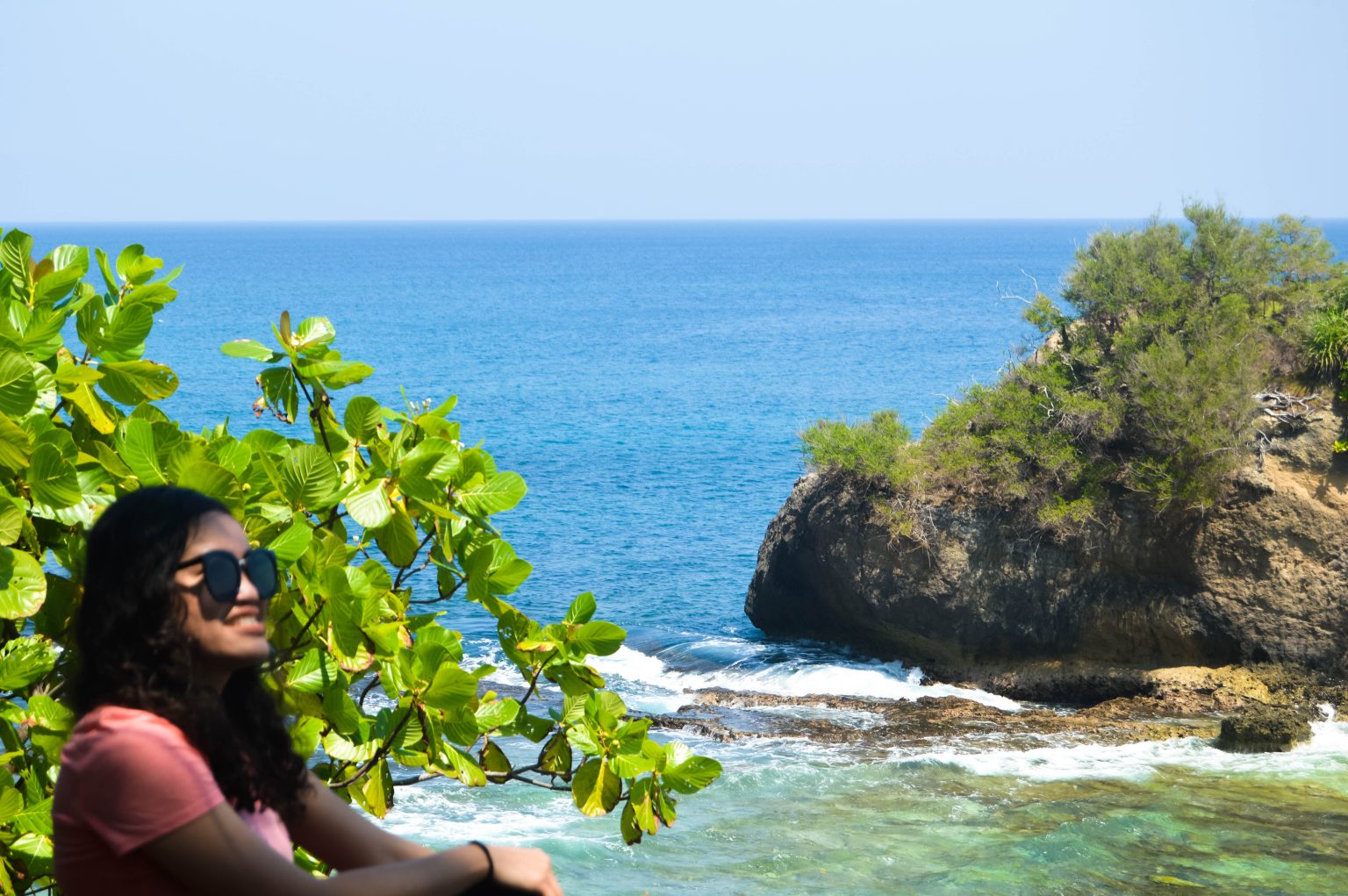
Together with other Geological Heritage in TNUK, namely Tanjung Layar which is on the Ujung Kulon Peninsula. The rocks in Karang Copong are included in the Cikancana Formation. The Cikancana Formation is a group of rocks resulting from ancient volcanic eruptions that occurred around 25 million years ago or at the beginning of the Miocene period.
One of the features of Karang Copong is that there is a large hole in the middle of the coral cliff. Copong is Sundanese which can mean dislodged, hole, or empty. There is an interesting story from local people about the hole in the middle of Karang Copong, which was actually caused by seawater abrasion on the weak part of this coral cliff.
It is said that Karang Copong was once a place of spiritual training for the warrior Ki Buyut Ireng or Syech Raja Angling Darma from the Salakanagara kingdom, which was allegedly founded in 130 AD. Fighters who lack knowledge will become disoriented or lose their strength when training at Karang Copong. According to the elders, so that knowledge does not become empty or dislodged like the hole in Karang Copong, they must fill themselves with religious knowledge, and strengthen their faith and devotion to God.
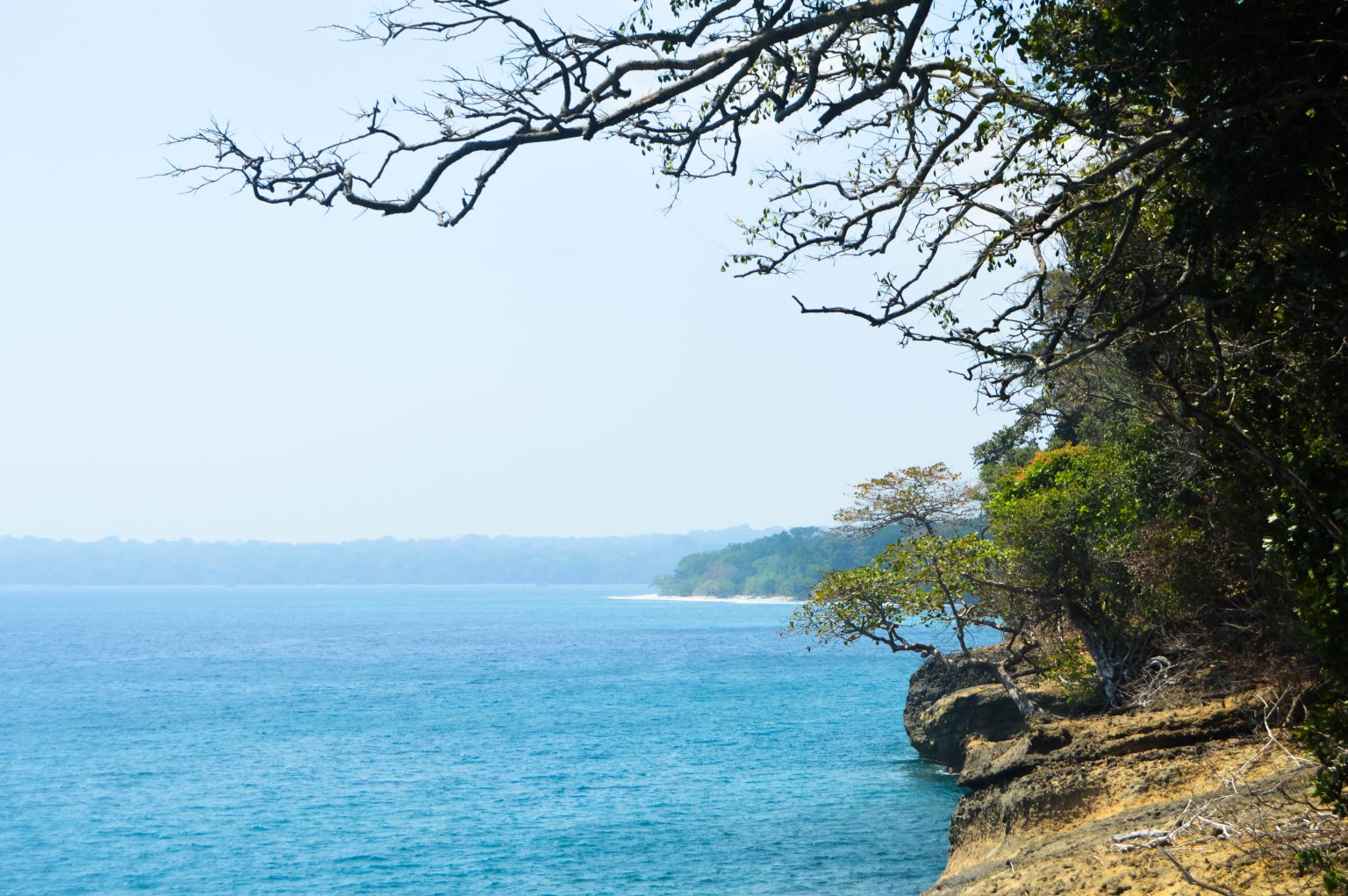
So, are you interested in visiting the Karang Copong Geological Heritage on Peucang Island?
Contact us to get the best tour deals.
WA: +62 811 6112 772
Email: [email protected]